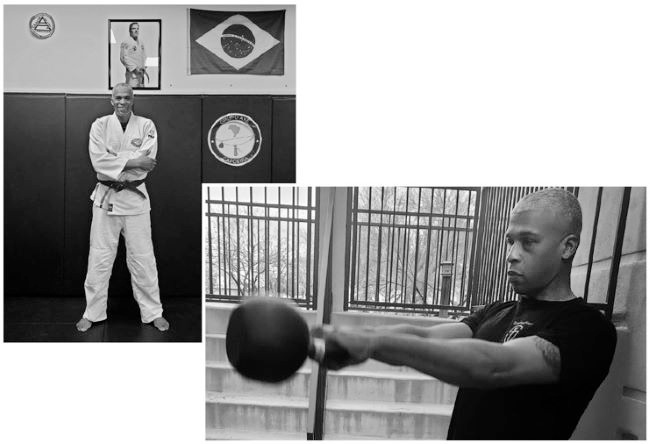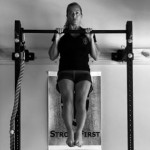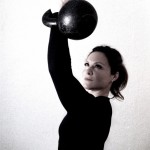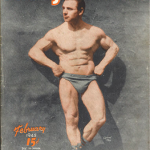(An Excerpt from Kettlebell Axe)
“Do you know what the difference between great people and regular people is?” says a coach to an athlete in Yevgeny Yevtushenko’s novel Don’t Die Before Death. “A great person is a gardener of self. He cuts off the unnecessary branches.”
In AXE, as in other types of training, pros do fewer things better.
What is “AXE”?
In case you missed our newsletter:
AXE is a revolutionary method for developing all-around fitness and health.
The “A” in “AXE” stands for “aerobic.”
The “X” refers to type IIX fast muscle fibers.
“E” is for “exercise.”
AXE will install aerobic power infrastructure in your fast fibers.
While simultaneously making these fibers bigger and more powerful—the ancient conflict between strength and endurance finally resolved.
(At StrongFirst, this method used to go by the name “A+A,” a snappy acronym for “alactic plus aerobic” by Al Ciampa, SFG. Then we realized that “A+A” should be used as an umbrella term that encompasses other types of anti-glycolytic training. I will explain this some other time. Meanwhile, if you see the method formerly known as “A+A” mentioned in articles and on the forum at StrongFirst.com, think “AXE.”)
AXE used to be the exclusive domain of Soviet athletic elites. At last, it is here to take you to the next level in your sport of choice—or simply get you in the best shape of your life, and maybe even add years to it.
In a ground breaking experiment by Verkhoshansky and Zaleev, the subjects, advanced mid-distance runners, kept making progress with the same two AXE exercises for three years.
“When you work with a serious adult and give him only one [exercise], nothing else is needed,” chuckles Prof. Victor Selouyanov. “But if you work with a child, and he is bored, then you start inventing variations of exercises that, in their substance, give the same result, but have a different form.”
Here is a story of a high-level athlete who has forgone variety of exercises and methods in favor of AXE kettlebell swings.
Dr. Prentiss Rhodes combines high-end expertise in strength and conditioning, martial arts, and medicine.

for the middle-aged martial artist.”
He is a Doctor of Chiropractic, a StrongFirst Certified Senior Instructor, and a National Academy of Sports Medicine Master Instructor. Prentiss has been a strength and conditioning coach to professional athletes from the NFL, the NBA, and combat sports. He has four decades of martial arts experience. After competing at an elite level in several full contact martial arts and sports, he earned another black belt, in Brazilian jiu jitsu, when in his 40s.
For most of my life, I’ve been a devoted martial arts practitioner. Preparing for competitions meant pushing myself to keep up with those around me—no matter how strong or skilled they were. Thanks to strength training and kettlebells (and some heavy-duty coaches), I was able to keep up with my friends who were high-level athletes. But, just like all good things…
My power was enough to get me by—but that was not sustainable, and my body paid a price. After a series of unfortunate injuries, I was forced to pick up my strength practice from the ground up.
I was lucky to be an early adopter of Pavel’s Strong Endurance™ protocols—and they saved me! With purpose, I dedicated myself to mastering the anti-glycolytic principles by using the two-handed swing as my main kettlebell lift and adding good old-fashioned roadwork for additional aerobic training.
I chose two-arm swings because a martial arts upper extremity injury made one-arm swings difficult. I selected a weight that was the closest to 40% of my bodyweight as per the intermediate-level recommendations [in Pavel’s Kettlebell Axe book].
I will respectfully interrupt Prentiss and comment on why he chose an “intermediate” weight.
A 565-pound deadlifter and a Beast Tamer, Rhodes has no trouble swinging much heavier kettlebells. However, for athletes who already carry high levels of absolute strength, emphasizing speed and power is often more productive than obsessing over the weight.
Moreover, Dr. Rhodes’ goal is not only to perform at a high level in his chosen fighting arts and sports—been there, done that—but to stay in the game for a long time. Once your carcass has mileage, it can often thrive on fast, even if it can no longer handle heavy, a lesson taught to us by smart senior athletes like Mark Reifkind and John McKean.
Back to Prentiss:
I practice swings as recommended, performing five repetitions on the minute with a 40kg bell. I maintain a roughly 80% effort for each rep. My “active recovery” between sets of swings consists of ground and stand-up martial agility drills at about 40–50% intensity. The upside is that I get more reps of my skills.
The genius in the way the protocol was designed is that it perfectly matches the pace of a sparring session in which a typical round may have about 7–10 seconds of flurries and/or scrambles at about 80% intensity followed by longer periods of lower intensity movement.
As a baseline, I perform two AXE sessions per week. Depending on the frequency and intensity of my martial arts training during the week, I may add a third swing session. My goal is to follow the StrongFirst principle of training as often as possible while staying as fresh as possible. Randomly introducing medium and light days with lower volume helps this. If my body doesn’t feel well enough for a third day of AXE, I perform shadowboxing and other drills to keep my skills well-oiled.
I started this regimen with 20 minutes or 100 total swings. Every four or five sessions, I increased the time until I built up to 40 minutes of work while paying attention to the stop signs such as passing the talk test and maintaining both the speed and the precision of each swing.
Roadwork is another important element of my conditioning.
It is not just a matter of grinding it out mile after mile—there is an art to this training! To get the most benefit, alternate between running and fighting drills while remaining mindful of your breathing technique and how you carry tension in your body. Be disciplined and stop training when you experience one of the following “stop signs”: 1) you cannot maintain nasal breathing; 2) you lose that important bounce in your step, and/or 3) you start to carry excessive tension in your body.
All fighters and other athletes ought to do themselves a favor and start applying Rhodes’ last stop sign to their sport-specific practice. This is priceless advice.
The results were amazing to me.
After a year of hard work and dedication, I tested myself with a sparring session at a national Brazilian Jiu-Jitsu conference. Imagine my amazement after comfortably completing 15 five-minute rounds—that’s 75 minutes!—of varying intensity sparring with some tough athletes. The best part was waking up next morning bright-eyed and excited for another six hours of adventure…
As a 50-year-old martial arts enthusiast, I was elated when my training suddenly felt like it had granted me more life! My strength and endurance were boosted in such a way that allowed me to keep going more than ever before—no fatigue required.
If swinging an AXE is good enough for an athlete of Prentiss’ caliber and skills, imagine what it can do for you.
In a book far removed from strength and conditioning entitled Frugal Luxuries, Tracey McBride retells a legend she heard in Japan.
…a Japanese man [was] much honored for his cultivation of a garden filled with magnificent chrysanthemums. So famous was this man’s garden that the emperor…desired to see these remarkable blossoms. Before the emperor made his visit…the gardener cut his treasured chrysanthemums, leaving only one exquisite blossom to please the emperor.
The American author continues:
At first, I was horrified to think of this man destroying the fruits of his hard work. But as I spent more time in the [Japanese] culture, I began to understand the reason behind his actions—appreciation. To appreciate something of beauty is, in Japanese culture, an elevated human activity. That the gardener destroyed hundreds of flowers so that the emperor could, without distraction, appreciate the one flawless flower was a logical course of action. Like the Japanese, we should cultivate the art of appreciation.
AXE is flawless. So is the swing. The chosen programming tools are bulletproof, and they lack for nothing.
In paperback and on Kindle






Hi Pavel. Your books have changed the way I view practices with kettlebells and barbells. I have questions about AXE. I read your book a few times and enjoyed it. At the summary chapter you wrote one may dedicate a Saturday for a training that complements AXE, i.e. Q&D. Do we still roll the dice for Q&D? And can I do the Total Tension Kettlebell Complex (TTKC) with this?
I.e. Monday and Thursday AXE
Tuesday and Friday TTKC
Saturday Q&D
Thank you for taking the time to weigh in on the comments!
Sebastian
Sebastian, thank you for your kind words!
You can roll a die for Q&D or go by feel.
If you do that, the TTC is too much.
Thank you Pavel! I’m sorry to bombard you with another question. In the summary section you gave the options of doing the KB C+J following the format of the kettlebell AXE on Tuesday and Friday. I use the 28 kg kettlebell for this practice. I start from 2 reps every minute but observe the 5 stop signs. Do we work up to 6 reps for 30 sets on this too?
Sebastian, follow the same instructions as for the swings. Do only one clean and multiple jerks.
Thank you again Pavel!
Dear Pavel,
I have another question if it is alright. While doing the AXE on Monday and Thursday. The KB C(single)+J on Tuesday and Friday. Would a minimalist deadlift programme slotted in on say Wednesday and Saturday be horror vacui?
Sebastian
Hi Pavel!
I bought a kindle edition yesterday and I didn’t read the whole book but I saw that AXE program is compatibile with Q&D. Is it compatibile with “strength aerobics”? For example; AXE on Mon and Thur, and Strength aerobics on Saturday or it will be to much?
Highlander, absolutely compatible.
Do Strength Aerobics the day after AXE; in your example, on Tuesdays and Fridays.
Thanks!
This summer I did A+A Swings 2/week with 48 kg.5 reps ,autoregulation, 20 – 60 sets. I feel awesome. Did a 5k run recently after a years break and there was not much of a time difference to a year ago.I guess it’s the WTHE.:)
Well done, TNT.
Pavel
I bet you’d expect this question – how does AXE compare to Q&D, in terms of adaptations it delivers? Are those programs interchangeable or rather similar? (Apart from upper body work in Q&D)?
Kind regards,
Marcin
Marcin, both improve mitochondrial quality and quantity, with Q&D prioritizing the former and AXE the latter. Both produce build muscle once you are working with decent weights.
For a more in-depth answer, please attend the Strong Endurance seminar.
https://www.strongfirst.com/special-events/strong-endurance-information/
Thank you, Albert!
It was a no-brainer that I was going to buy this when the announcement arrived in my email last week, I own every Pavel book since the early days.
I just want to say “thanks!” to whomever organizes these things for making it directly available from Amazon. I clicked on the link in my email and it took me right to the page at that site and my purchase was made with a single click… “buy now”.